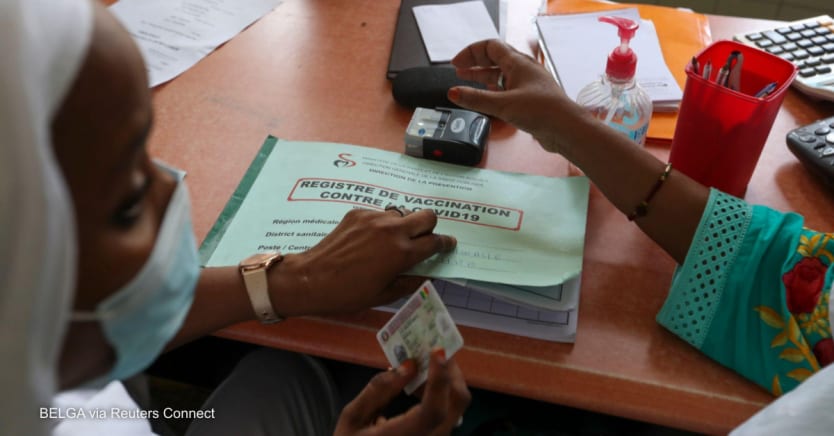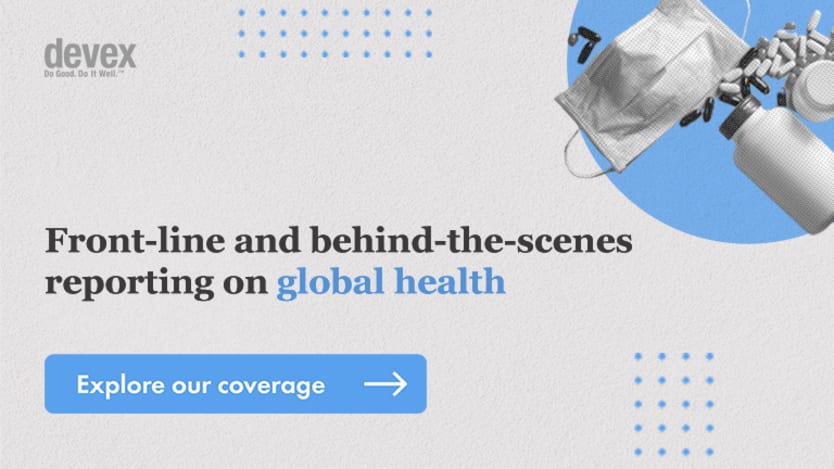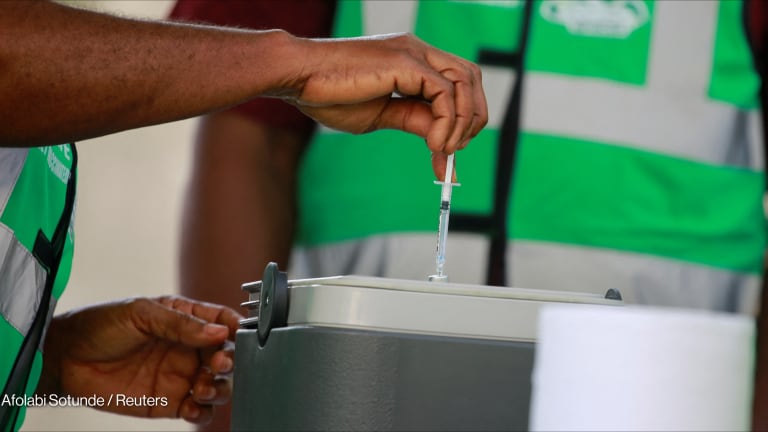
The omicron-fueled fourth wave of the pandemic in the African continent is flattening — and if this trend continues, it marks the “shortest-lived surge” in COVID-19 cases on the continent since the onset of the pandemic, according to the World Health Organization. The surge lasted for six weeks.
Sign up for Devex CheckUp
The must-read weekly newsletter for exclusive global health news and insider insights.
But health experts warn that public health measures to prevent the spread of the virus are still as important as ever in managing the pandemic.
“Early indications suggest that Africa’s fourth wave has been steep and brief but no less destabilizing,” said Dr. Matshidiso Moeti, WHO regional director for Africa, in a press release. “The next wave might not be so forgiving.”
The first wave on the continent lasted 31 weeks; the second wave 33 weeks, and the third wave 28 weeks, according to a WHO spokesperson.
But the data was also collected during the holiday period, which is a timeframe that has previously been characterized by underreported numbers of infections, so the agency is cautious with making this statement, said Dr. Abdou Salam Gueye, director of emergency preparedness and response at WHO Africa, during a press conference Thursday.
The continent has recorded 10.2 million cases. Deaths — which can mostly be attributed to people at high risk of severe illness — rose by 64% in the past week, compared to the week before, the agency said. But deaths from this wave are still lower than all the previous waves.
South Africa, whose laboratories first reported the omicron variant, had a large increase in infections during this wave, but saw a 9% decline in weekly infections over the past week. During this wave it has also seen a low rate of hospitalizations, with only 9% of its 5,600 intensive care unit beds currently hosting COVID-19 patients.
“We are definitely experiencing a very large fourth wave of COVID, and 95% of all of these infections are of the omicron variant,” said Dr. Anita Graham, an intensivist at the University of Witwatersrand in South Africa, during the media briefing. “Despite this massive upsurge in cases and infections, we definitely are also seeing the least of all severe COVID waves, with much less hospitalizations and much less ICU requirements.”
She said she suspects this is because the country has a high level of previous infection — or seroprevalence — estimated at around 70%, although this wanes over time. She also said contributing factors likely include that vaccination rates in the country have increased since previous waves of the pandemic, and omicron is “likely a slightly less virulent strain” — meaning it causes less severe effects. But there are still serious cases of unvaccinated individuals, as well as those with comorbidities, admitted to hospitals.
Only North and West Africa are still experiencing a rise in COVID-19 cases, with North Africa seeing a 121% increase this past week, over the one before.
And while vaccination is the best defense against severe disease, hospitalization and death rates are still low, Graham said. Only a little over 10% of the continent’s population is fully vaccinated. Bottlenecks on increasing those rates are now due to delays with country-level rollouts, whereas the previous issue was supply of vaccines, Gueye said.
Thirty African nations have detected the omicron variant, but this is likely an underestimate, he said.









